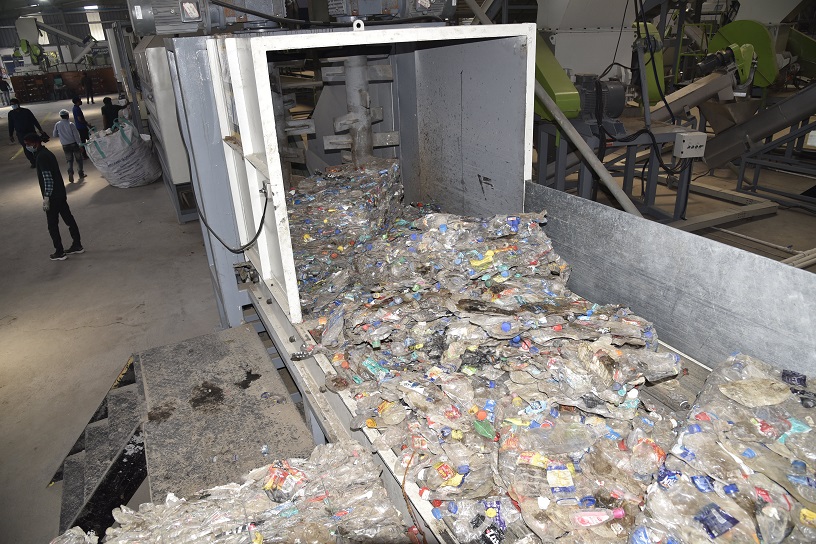In the circular economy, the product is made from recycled materials and ends up being recycled itself.
New Delhi: India’s new circular plastic economy is turning trash into treasure, reducing plastic at source in flexible packaging and lowering carbon footprints.
This is good news for India, and also those in the Big Plastic Debate. There are some companies in this business, and some very efficient entrepreneurs. I met one last week who is at the heart of this new makeover of plastic business across the world.
He is a young Indian who shuttles between India and the United States and explains to his employees and clients across the world that there was a time when plastic was not hated. It was developed as an environmentally friendly material and used to preserve, among other things, trees. And that time has returned.
Anantshree Chaturvedi, vice chairman and CEO of Uflex Films International, shaped his studies and career mostly out of the West—where he developed a taste for rugby—but still wears tulsi beads on his wrist for a hotline to his mother and the Gods.

Every day, he explains to his clients and friends, and also to bureaucrats of the Indian government that in a traditional linear economy, products are made from raw materials and everything—byproduct waste and product alike—endin the scrap heap. But in the circular economy, the product is made from recycled materials and ends up being recycled itself.
In short, he is saying let us not hate plastics anymore, and let us be responsible towards disposing of the product. Chaturvedi knows it is a herculean task in India. He is pushing his company to do what it takes to turn plastic into a genuinely-loved product.
His work has earned him accolades, the company has been awarded by the Indian government.
“The linear economy is at an end. I really believe it is over,” says Chaturvedi, whose plants across the world—stretching from Poland to Mexico to the United States—has drawn praise for safe environmental practices over the years.
To limit global warming below 2°C, rapid reduction in global energy consumption is required. Experts say the plastic industry has been focusing on reducing sectoral greenhouse gas (GHG) emissions from production (supply-side) of widely used resources.
Chaturvedi says this can be achievable only when reduction in supply-side emissions is complemented with demand-side management. And it is here that a circular economy can do wonders through better demand management and create opportunities to reduce the demand for virgin resources and emissions associated with their production. Globally, in 2019, the GHG emissions from production and incineration of plastic were estimated to be more than 850 million tonnes (equal to the emissions from 189 500MW coal power plants).
“Plastic hazards are widely talked about but not widely understood. In the simplest form, plastic has a stock problem and a flow problem. In an economy, resources get allocated as per their highest utility importance. But plastics are the most inefficient ways of resource allocation,” says Chaturvedi. He told me plastics get allocated based on creating a stockpile of plastic. Now it could be glass, aluminium or plastic. There are loads of new products that get added to the world every day, like the polymers his company makes. “So the new wave of plastic is to take a holistic look at the stock problem and the flow problem.”
Like Uflex Films, many are using plastics owing to their substantial benefits of being lightweight, flexible, durable, and providing long shelf life, which are far greater than their drawbacks. The pandemic has seen a significant rise in the use of plastics, particularly in the form of personal protective equipment (PPE) and because of growth in e-commerce packaging, or in light of safety and hygiene aspects of product packaging.
Chaturvedi says packaging is the key end-use sector accounting for the highest share. Packaging plastics with mostly shorter product lifetimes, compared to plastics used in other applications such as building and construction (B&C) or in automobiles, are significantly contributing towards India’s circular economy and help create a transition from the take-make-use-throw linear model.
In India, 60% of plastics are recycled. However, these are mostly downcycled in an informal setting. Chaturvedi says the roadmap for circularity in plastics aims to decouple plastics production from virgin fossil feedstock.
A study by Tata Energy Research Institute (TERI) says out of the total polymer consumption of 16.8 million tonnes per annum in 2018-19, 90% was for plastic and the remaining 10% was for non-plastic consumption. From the total plastic waste generated, about 60% is actually recycled, 8.5% reutilized for energy recovery and repurposing, and about 31.5% is mismanaged plastic waste. Chaturvedi says that number needs to be reduced, and his plants are already doing that. The zero-waste movement across the world, which aims to reduce garbage through reducing consumption, reusing materials and recycling residual waste, has been around for some time. But Chaturvedi says it is now finding new prominence, thanks to new products flooding the market.
He is sounding like a priest, he knows the religion of the circular plastic economy. He has found new—preferably profitable—uses for what would have once been waste. He knows modern recycling plants have become more competitive by becoming more efficient. He is confident that he will satisfy his increasingly environmentally conscious customers. And once he is done with his work, Chaturvedi will think about the future
That would be Chaturvedi 2.0.

